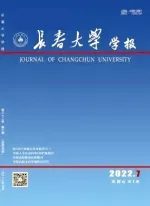英語定狀語漢譯策略探究
張 福
(西北民族大學 外國語學院,蘭州 730030)
英語定狀語漢譯策略探究
張 福
(西北民族大學 外國語學院,蘭州 730030)
英漢兩種語言“主謂結構相同,定、狀排列有別”。認識把握這一特征,對做好英漢翻譯大有裨益。然而,在英語中,定、狀語形式多樣、結構復雜,準確恰當地將其譯為漢語實屬不易。基于大量參考文獻和多年教學經驗積累,探究英語定、狀語翻譯策略,以期促進英語翻譯教學的實效性。
定語;狀語;漢譯;策略
就英語和漢語的表達方式而論,雖有不少相同之處,但不同之處更多。[1]28例句:(The poor old)man(from China)(whom we met last week)and(who was taken ill on Tuesday),(suddenly)and(quite unexpected)died(of malaria fever in the hospital here)(before his wife could reach him).(那個可憐的老人,是個中國人。星期二那天,突然得了瘧疾,病死在附近的一家醫院里。連他的妻子都沒見上他最后一面。)在這個英語例句中,括號中的成分不是定語就是狀語,即所謂“枝葉”成分。如果將它們拿去,剩下的“主干”就是和漢語句式基本相同的主謂結構。一言概之,英漢兩種語言“主謂結構相同,定、狀排列有別”。不言而喻,準確認識與把握英漢兩種語言表達方式的異同,對英語學習者來做好英漢翻譯大有裨益。[2]下面,筆者試從英語定語、狀語入手,探究英漢翻譯策略。
1 英語定語、狀語漢譯策略
蘇聯翻譯家N.卡什金說過“透過譯文看到的作者,仍是外國人,但他是用地道的譯文語言同讀者談話的。”這句話十分貼切的揭示了語言翻譯的核心要領——理解是翻譯的基礎,達意才是關鍵。[1]6即在正確理解的前提下,譯文質量的好壞就全看技巧和表達能力如何了。據此,筆者在參考大量文獻的基礎上,加上多年教學經驗,總結出下面幾種比較實用的英語定語、狀語漢譯方法。
1.1 順譯法
所謂“順譯”(translation in original order),是基于傳統語言學派的主張。卡特福特(Catford.John.C.)認為“Translation may be defined as follows:the replacement of textual material in one language(SL)by equivalent textual material in another language(TL).”[3]即翻譯是語言材料(形式)的對應轉換。基于這一理念,筆者認為,在一般情況下在進行英漢翻譯時,無需對構成英語句子的詞序/句序進行大的調整,盡量按照英語原句的順序進行翻譯,這就是我們所說的“順譯法”。[4]115實踐證明:在部分英語定語、狀語的漢語翻譯中,這一方法是可以使用的。如:
(1)Too clearly,it is a topic we shall do no justice to in this place.
參考譯文:很顯然,像這樣一個題目,我們是不可能在這里講的透徹的。
(2)There are some metals which possess the power to conduct electricity and ability to be magnetized.
參考譯文:某些金屬具有導電的能力和被磁化的能力。
解析:例(1)為限定性定語從句,副詞短語Too clearly為狀語;例(2)也為限定性定語從句。譯文采取順譯法,狀語、主句、定語從句按照英語原句的順序進行翻譯,漢語譯文語句簡煉,達意,符合漢語的表達習慣。
(3)North American viewers watched the start of the royal procession without missing a single hoof-beat.
參考譯文:北美洲的觀眾注視著英國皇家儀仗隊的起步,連一個馬蹄聲也沒漏掉。
解析:該句為簡單句,介詞短語without missing a single hoofbeat為伴隨狀語。譯文采取順譯法,表達的意思完整,銜接自然,符合漢語的規范。
(4)A jeep,full,sped fast,drenching me in spray.
參考譯文:一輛坐滿人的就吉普車急駛而過,濺了我一身水。
(5)We worked fast and well,so that we over-fulfilled our production plan.
參考譯文:我們工作得又快又好,超額完成了生產計劃。
解析:在例(4)中,drenching me in spray為結果狀語,在例(5)中so that we over-fulfilled our production plan為結果狀語從句。在漢語表達中,原因和結果的順序一般比較固定,大多情況下“原因”在前,“結果”在后。顯然,在例(4)、例(5)中英語和漢語表達順序基本一致,譯文采取順譯法,漢語意思通順、簡潔、明了,符合漢語的習慣。
值得注意的是,順譯——順著原文詞序或句序翻譯。順譯不是逐字翻譯,不排斥個別詞或詞組(特別是充當修飾語的)的倒置,達意是關鍵。
1.2 逆譯法
與“順譯”相對,“逆譯”(translation in converse order)是指逆著或基本逆著原文的詞序或句序進行翻譯,亦稱“反轉”。詞序與思維方式和表達習慣有關。操漢語者時空觀上大體遵循逆序法,即由大到小,由遠及近,由重而輕;操英語者的時空觀大體遵循順序法。[4]115正確把握漢英兩種語言的時空觀對于我們進行英語狀語、定語的漢語翻譯具有重要指導意義。如:
(1)At eleven minutes past one A.M.on the 16thof October,1946,Ribbentrop mounted the gallows in the execution chamber of the Nuremberg prison.
參考譯文:1946年10月16日凌晨1點10分,里賓特洛甫走上紐倫堡監獄死刑室的絞架。
(2)I was born in Burdine,Kentucky,in the heart of the Appalachian coal- mining country.
參考譯文:我出生于阿帕拉契山脈煤礦區中心的肯塔肯州柏定市。
解析:英語中時間短語狀語之間的排列一般都是從小到大,而在漢語中一般都是由大到小。英語中地點短語狀語之間的排列一般也都是從小到大,而在漢語中一般也都是由大到小。例(3)、例(4)譯文采取逆譯法,語言曉暢,句意清晰,符合漢語的表達習慣。
(3)We had to give up the program for lack of investment funds.
參考譯文:由于缺乏投資資金,我們不得不放棄這項計劃。
(4)The compass needle can be used to show direction because the earth itself acts like a huge magnet.
參考譯文:因為地球本身就像一個巨大的磁體,故指南針能用來表示方向。
(5)A student of maths must become familiar with all the signs and symbols commonly used in maths and bear them in mind and be well versed in the definition,and formulas as well as the technical terms in the field of maths,in order that he may be able to build the foundation of the mathematical subject and master it well for pursing advanced study.
參考譯文:為了能夠打好數學基礎,掌握好數學知識,以利于深造,學數學的學生必須熟悉和牢記數學中所有常用的符號和代號,精通數學方面的定義、所有的公式和術語。
解析:由于表達上習慣上的不同,英語句子習慣將因果關系、先后關系中的“果”與“后”放在句首,如例(3)、例(4)和例(5);而漢語則相反,一般先因后果,層層遞進,最后綜合,點出主題。所以,處理這種句子時,宜采用逆譯法,將英語原句中的某些成分(或部分),在翻譯成漢語時放在句子的前面。這種方法可以使漢語譯文句子簡練緊湊,結構整體感更強。
(6)Intense light and heat in the open contrasted with the coolness of shaded avenues and the interiors of buildings.
參考譯文:露天場所強烈的光線和酷熱與林蔭道上和建筑物內部的涼爽形成了對照。
(7)He would be a rash man who should venture to defy world public opinion and act arbitrarily.
參考譯文:如果有人敢于公然蔑視世界公眾輿論而一意孤行,那他一定是個魯莽之徒。
(8)This is no class war,but a war in which the whole British Empire and Commonwealth of Nations are en-gaged,without distinction of race,creed or party.
參考譯文:這不是一場階級之間的戰爭,而是一場不分種族、不分信仰、不分黨派,整個大英帝國及英聯邦全體成員國無不參與的戰爭。
解析:在英語中,修飾名詞(或代詞)的定語一般放在名詞之后,而漢語里則放在被修飾的名詞之前。如例(6)、例(7)和例(8)。如果采用順譯法,語言累贅。運用“逆譯法”符合漢語定語前置的習慣。譯文通順、流暢,符合漢語的表達方式。
1.3 轉句譯法
奈達認為“Translation consists in reproducing in the reporter language the closest natural equivalence of the source language message,first in terms of meaning,and secondly in terms of style.”[5]4顯然,翻譯是雙語間意義的對應轉換,即“Translation means translating meaning.”[5]5基于奈達理論,筆者認為在對英語定語、狀語進行翻譯時,可采用符合漢語表達習慣的靈活的方法,需對用作定語或狀語的短語(或單詞)轉化成英語中的一個句子,然后翻譯,簡稱為“轉句譯法”。[6]其目標是使漢語譯文明白易懂,語句連貫。一般來說,“轉句譯法”包含以下兩個方面:
(1)單詞不單。例如:
①Exhausted,the swimmer fell back into the pool.
參考譯文:盡管游泳者已經精疲力盡了,但他還是跳進了游泳池。
解析:該句可擴展為Although he was exhausted,the swimmer fell back into the pool.。Exhausted所表示的意思與Although he was exhausted相同。把動詞Exhausted轉譯為表示原因關系的狀語從句,使得句子之間過渡自然,連接緊湊,漢語意思一目了然。
②The funds raised are mainly used for helping the homeless.
參考譯文:人們已經籌集了資金。這些資金將被主要用于幫助那些無家可歸者。
解析:該句可擴展為The funds have been raised.And they are mainly used for helping the homeless.顯然,The funds raised所表示的意思與The funds have been raised.相同。把The funds raised轉譯成一個句子,使得漢語譯文平滑曉暢,清楚明了。
(2)短語不短。例如:
①After visiting the Summer Place,we went on to the Great Wall.
參考譯文:(我們)參觀完故宮后,我們去了長城。
解析:該句為主從復合句,分詞短語After visiting the Summer Place為時間狀語。After visiting the Summer Place所表示的意思與After we visited the Summer Place相同。把分詞短語After visiting the Summer Place轉為時間狀語從句進行翻譯,使得漢語譯文句子之間過渡自然,意思一目了然。
②The two countries with all the talk of warmer relations are spying on each other as avidly as at the height of the cold war.
參考譯文:盡管兩國高唱關系熱化,但雙方在互相偵查方面的急切程度不減于冷戰高潮時期。
解析:原句等同于The two countries are all the talk of warmer relations,but they are spying on each other as avidly as at the height of the cold war.The two countries with all the talk of warmer relations所表示的意思與The two countries are all the talk of warmer relations相同。隨后進行翻譯,譯文清楚明了,銜接自然,符合漢語的表達習慣。
③The book dealing with English composition was written by a professor.
參考譯文:這本書是由一位教授撰寫的。它主要解決英語寫作方面的問題。
解析:原句可替換為The book deals with English composition.And it was written by a professor.The book dealing with English composition所表示的意思與The book deals with English composition.相同。采用短語不短法將英語原句進行轉換處理,隨后進行翻譯,譯文清楚明了,符合漢語的表達習慣。
上述英漢互譯實例中,我們發現:在處理英語中的一些以詞、短語方式出現的附加在“主干”(主謂結構)上的“枝葉”(定語或狀語)成分時,可以將其從“主干”上拆下來,進而根據語法關系擴展為一個句子,然后將它們按照漢語的表達習慣譯成漢語,加工潤色。
1.4 從句不從法
這一翻譯技巧基于句型轉換(conversion of sentence patterns)理念,指不同句子結構的同義轉換,是語言內部的普遍現象。不同語言中句子同義結構的多樣化正是漢英互譯中句型轉換的客觀基礎。在英語定語、狀語從句的漢譯過程中,采用此方法常常會獲得異曲同工之妙。如:
(1)If you take care of the pence,the pounds will take care of themselves.
參考譯文:積少成多。
解析:該句為主從復合句,主句為the pounds will take care of themselves,If you take care of the pence為狀語從句。這個復合句可以轉換成兩個并列句Take care of the pence,the pounds will take care of themselves.將其意譯為“積少成多。”,漢語意思簡潔明了,毫無贅意。
(2)Our men had gone quite a distance off before the enemy’s reinforcement troops came up.
參考譯文:我們的隊伍已經走得很遠了,敵人的增援部隊才趕上來。
解析:原句可轉換為 Our men had gone quite a distance off.And the enemy’s reinforcement troops came up.采取從句不從法將原句進行轉換,而后翻譯。漢語譯文銜接緊湊,句意曉暢,符合漢語的表達習慣。
(3)She had talked to Vice-President Nixon,who assured her that everything that could be done would be done.
參考譯文:她和副總統尼克松談過話。副總統向她擔保,凡是能夠做到都將竭盡全力去做。
解析:原句可轉換為She had talked to Vice-President Nixon.And he assured her that everything that could be done would be done.拆分后的兩個簡單句所表示的意思與原句She had talked to Vice-President Nixon,who assured her that everything that could be done would be done.相同,而后進行翻譯。譯文清楚明了,符合漢語的表達習慣。
(4)He unselfishly contributed his uncommon talents and indefatigable spirit to the struggle which today brings those aims within the reach of a majority of the human race.
參考譯文:他把自己非凡的才智和不倦的精力無私地獻給了這種斗爭。這種斗爭今天已使人類中大多數人可以達到這些目標。
解析:原句可轉換為He unselfishly contributed his uncommon talents and indefatigable spirit to the struggle.And it today brings those aims within the reach of a majority of the human race.兩個簡單句,而后將其翻譯為漢語。譯文邏輯合理,言簡意賅,言至意達。
上述例句結構相對比較復雜,如果按照英語原句直接譯成漢語顯得太長,不符合漢語的表達習慣。采用從句不從法,將其轉化為并列句,進而譯為漢語,譯文通順、流暢。
顯然,一旦主謂結構被確定(英漢主謂結構基本雷同),英語句子的分析就會一目了然。而英語句子之所以冗長,其原因無非有二:一是后置成分(如定語從句)很多,這就與漢語漢語的常規表達相悖;二是插入成分不少,常使漢語讀者產生思維被阻斷的感覺。于是,英譯漢的常規辦法就是變長句為短句,其手段之一就是從句不從法,目的是為了保證譯語句子的可讀性,增強其通暢性。
2 結語
綜上所述,英語定語、狀語形式多樣,結構復雜。英譯漢時,我們要視具體情況具體分析,靈活運用各種翻譯策略。在理解的基礎上達意,翻譯出地道的漢語。
[1] 成昭偉.新英漢翻譯實務[M].北京:國防工業出版社,2007.
[2] 韓其順,王學銘.英漢科技翻譯教程[M].上海:上海外語教育出版社,2001.
[3] Catford.John.C.A Linguistic Theory of Translation:An Essay in Applied Linguistics[M].London:Oxford University Press.1965.
[4] 方夢之.中國譯學大辭典[M].上海:上海外語教育出版社,2011.
[5] 參見閻佩衡.英漢與漢英翻譯教學論[M].北京:高等教育出版社,2005.
[6] 參見馮慶華.實用翻譯教程[M].上海:上海外語教育出版社,2005.
On Strategies of Chinese Translation of English Attributive and Adverbial
ZHANG Fu
(School of Foreign Languages,Northwest University for Nationalities,Lanzhou 730030,China)
Seeing from the structure of sentences,we can find that English basic sentence structure is the same as Chinese,that is to say,they both belong to SV structure,but the orders of attributive and adverbial are different in these two languages.It is very useful for English and Chinese learners to know the feature well.In English,however,forms of attributive and adverbial are various,so it is hard for people to translate them into Chinese correctly and appropriately.Based on many references and teaching experience,the author proposes several strategies of Chinese translation on English attributive and adverbial,hoping to improve efficiency of English translation teaching.
attributive;adverbial;Chinese translation;strategy
G642
A
1009-3907(2012)08-1032-04
2012-03-01
張福(1980-),男,甘肅涼州人,碩士研究生,主要從事英語教學論方面研究。
責任編輯:劉 琳

